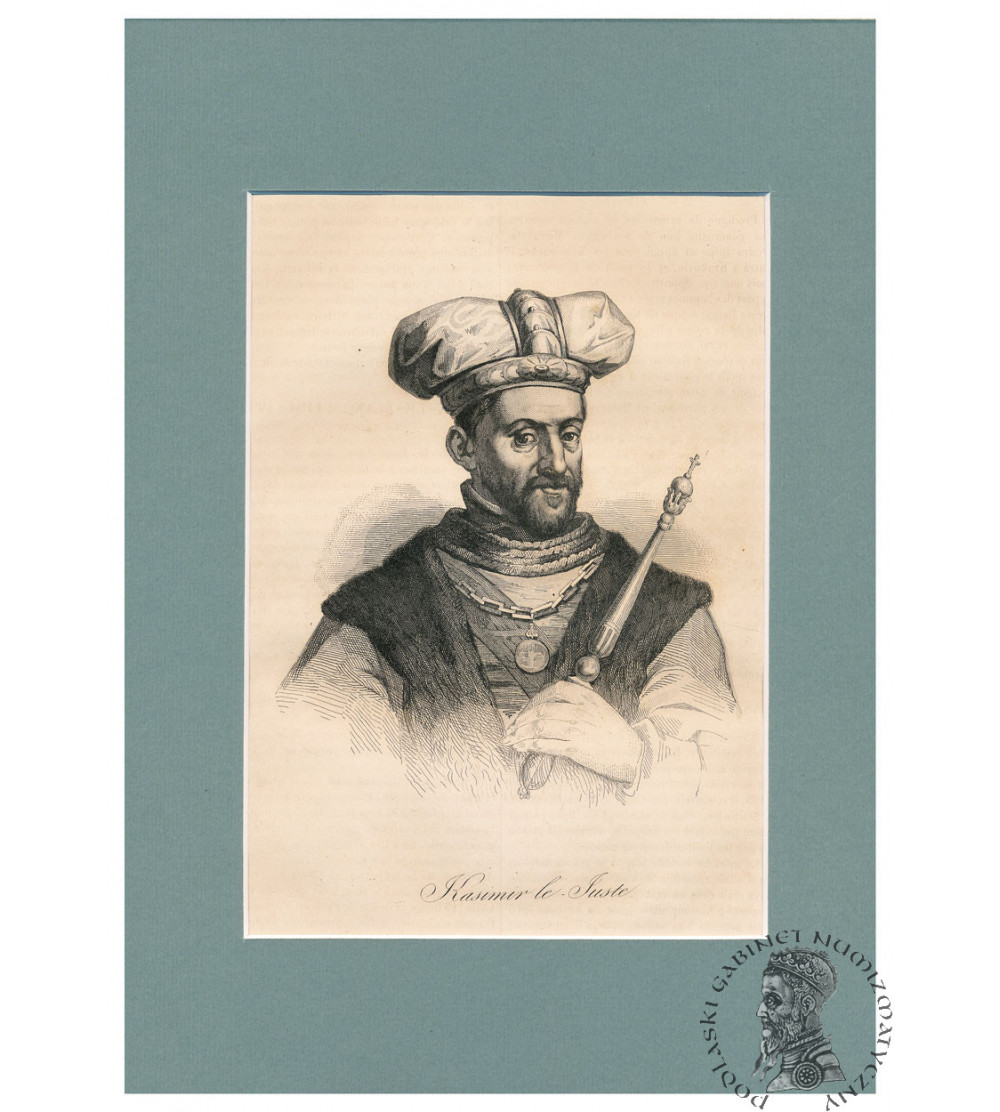




Casimir II the Just, Prince of Poland, Kasimir le Juste, portrait, steel engraving 19th century, work from Leonard Chodźko's work - La Pologne historique, litteraire, monumentale et ilustree, Paris 1839-1841, all A4 format (passe-partout), image dimensions 14 cm x 20 cm, very good condition.
Casimir II the Just (1138-1194) The youngest son of Boleslaw the Wry-mouthed was granted his own district only at the age of twenty-eight. There he exercised a peaceful rule, and during feasts, while drinking, he won the favor of secular and clerical dignitaries. Thanks to this, when a conflict broke out between the mighty and Mieszko III in Cracow, Casimir managed to take over the throne from his unpopular older brother. However, this meant breaking the principle of seniority. The prince, wishing to have his supreme authority confirmed by the pope and wanting to ensure his sons' succession to the throne, relinquished certain powers to the clergy, which began the process of the Polish Church's independence from secular power. Casimir extended his rule to eastern and central Poland within a few years, with only Greater Poland and Silesia remaining independent of his rule. He also secured the eastern border ensuring his influence in the Ruthenian principalities. He died suddenly, during a feast, possibly poisoned. Inspired by the prince, Wincenty Kadlubek wrote a chronicle of Polish history. In his description of Casimir he used the term "prince of justice," a nickname that became popular in the 16th century. The image of the prince was immortalized on the floor of the collegiate church in Wiślica. source: szlakpiastowski.pl
CHODŹKO, Leonard Borejko (1800-1871), La Pologne historique, litteraire et monumentale, (...), 1835-1842. A monumental work by the famous Polish émigré publisher Leonard Chodźko which is a history and geographic-political description of Poland. The work was published in three volumes. The first part is the history of Poland from the earliest times to the reign of Wladyslaw Lokietek. The second volume covers the history of Poland from the reign of Casimir the Great to the death of Stefan Batory, while the last volume covers the history of Poland from the beginning of the reign of Sigismund III Vasa until the events contemporary to the Author and the Readers, i.e. the November Uprising. Each part also contains descriptions of unique and interesting places in Poland, as well as basic information about literature, art and science. In addition, the work contains examples of exceptional monuments in the Polish lands. An important part of the work includes fairy tales, legends and short stories, as well as an essay on dramatic theater in Poland. The work also contains a description of Polish dances, such as the polonaise, mazurka, and krakowiak. The work is very richly illustrated, with numerous intaglios, natural monuments, sacred objects, castles, palaces, cities, portraits of important historical figures from the history of Poland, works of art, notes of songs, etc. This brings the total to 180 engravings (including maps), in a set of three volumes, i.e. 60 engravings for each volume collated with a table at the beginning of the volume.